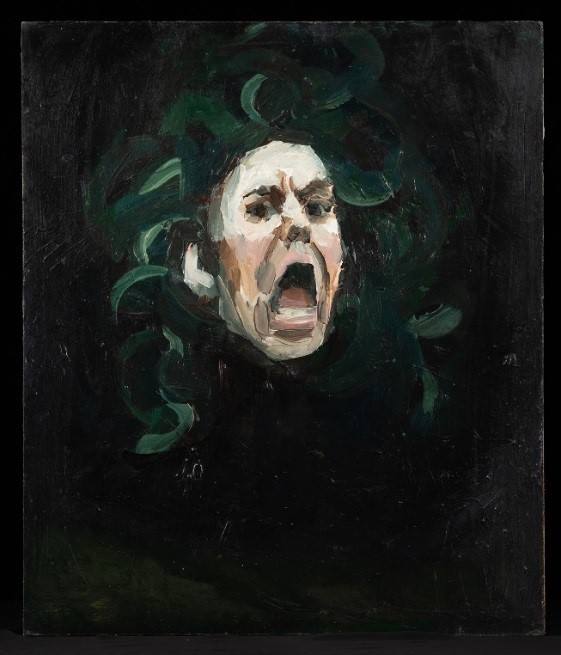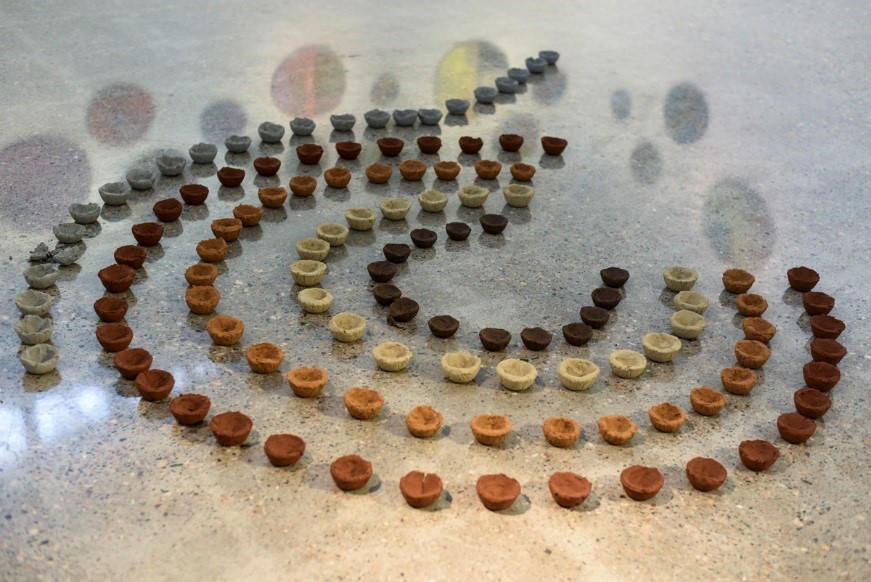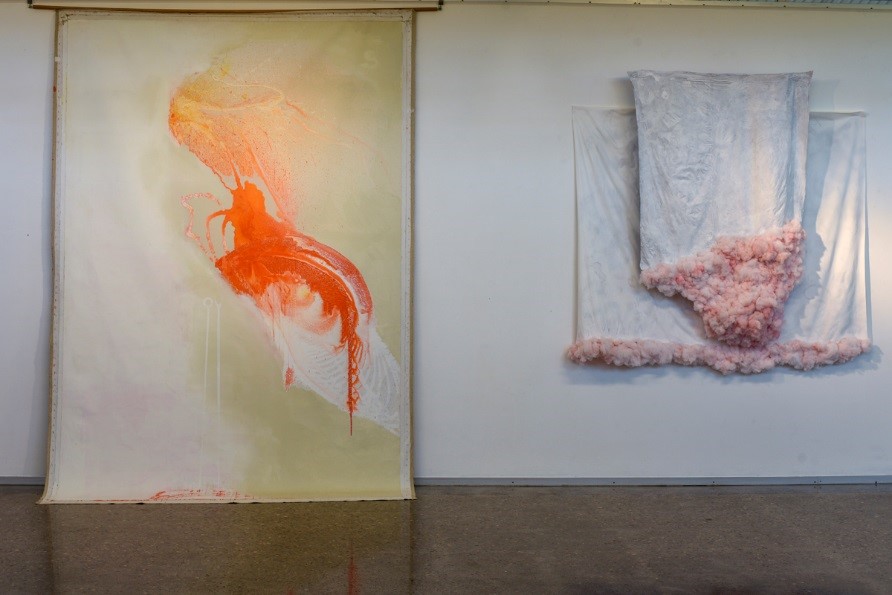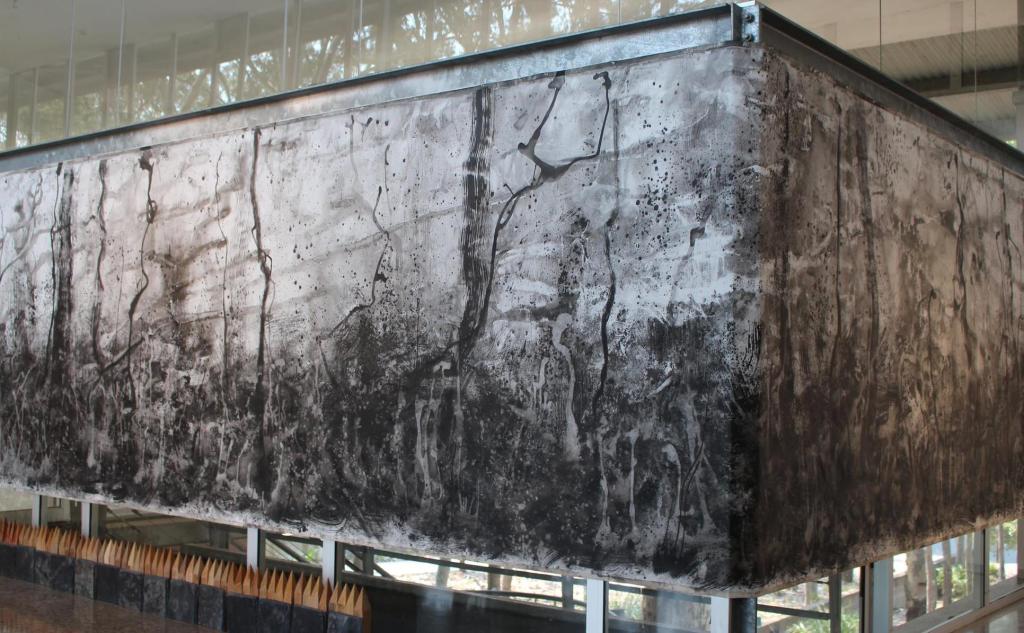Dr Annemarie Murland AM, the curator of this exhibition, asks: ‘If you could, how would you write yourself into the canon of Western art history?’
It’s a tantalizing question, and never has there been a better time to pose it. It’s in the zeitgeist, with the National Gallery of Australia’s new director, Nick Mitzevich, driving the #KnowMyName project seeking to recognise Australian women artists, and a global context in which the #MeToo movement, Greta Thunberg and many other girls and women are holding traditional authority figures to account.
Read: Know my name – and don’t forget it
But where have we been and where are we going? At the end of her life, artist Grace Crowley (1890-1979), a significant driver of Modernism in Australia, began gifting her work to major institutions to ensure that she actually did find a place in the canon. Oh, despair that those galleries were not already actively buying more of her work in her lifetime.
Also in the 1970s, Linda Nochlin posed the question, ‘Why have there been no great women artists?’ Fast forward to today, and curator and art historian Denise Murrell asks in her book Posing Modernity, ‘Who are the women of colour depicted in the iconic works of Western art history?’ In some cases, iconic works are being renamed to not only reimagine but recreate the canon, such as Portrait of Madeleine by Marie-Guillemine Benoist (1768-1826) – the painting was formerly known as Portrait of a Negress.
In the preface to the exhibition catalogue, Dr Maura Reilly – the founding curator of the Elizabeth A Sackler Center for Feminist Art at the Brooklyn Museum – discusses the idea of curation as activism. Murland embraces that notion in this exhibition. Beginning with the traditional genre of portraiture, the show moves through contemporary women’s experience and artistic practice, installation, sculpture, paintings, textiles, prints, and photography, from intimate to large-scale. Murland acknowledges the artistic integrity of all involved and each were invited in their own ways to shake up the canon.
Rachel Milne has created two self-portraits in her signature style, painting directly onto the canvas – a study in tone, her brushstrokes swift and decisive. She depicts herself as Medusa, in a remake of the 1598 Caravaggio painting in the Uffizi: in the Greek myth, Medusa’s beauty is so powerful that one glance could turn a man into stone. She is a historical figure struck down by the patriarchy, the ultimate angry woman. In Milne’s self-portrait, the subject is the severed head of Medusa depicted at the moment of recognition of her fate, her power, and her agency.

Rachel Milne, Self Portrait II (2000). Photo: Joerg Lehmann.
Milne’s counter image to this is her potent pregnant self, close to the due date – so close in fact, that at the opening there she was with baby in a sling. Side by side, these two images suggest the complexity of a woman’s experience – she is an artist, a mother, at times emotional, angry, reflective, and uncertain. She is beautiful, ordinary and extraordinary. In one work, she is of Greek legend, snakes writhing in her hair; in the other, she is a 21st century woman in her domestic environment, bound by the routine of the everyday, staring in the mirror, waiting, expecting, a towel encircling her waist.
Lezlie Tilley explores the gamut of Western culture – religion, the law, power, control – in found objects smothered in biblical text. Her canon is one of exclusion, power and authority.
The exhibition is located just a stone’s throw from the open-cut mines of the Hunter Valley. Penny Dunstan’s ephemeral installation has mined clays across the spectrum of local colours, revealing a darker secret about the profundity of soils and what they tell us about our fragile ecosystems. How will the Western canon proceed in the era of the Anthropocene?

Installation view of Penny Dunstan, Earth Bowls (2019). Photo also shows reflections of the paintings of Dan Nelson. Photo: Clare Weeks.
Murland’s own work in the exhibition pays homage to the great feminist artist of the 1970s Carolee Schneemann (1939-2019) and her performance piece Interior Scroll (1975), which saw Schneemann posing as a life model while reading from her book, Cezanne She was a great Painter (1976), and then reading from a scroll she drew from her vagina. Performance documentation of the work includes beet juice, urine, and coffee on screenprint on paper. Schneemann was famously told by her male art professor that she could ‘do what she wants because nobody will pay you any attention’ – how wrong he was. Murland explores the abject and decorative in a huge, bold soft sculpture installation. Titled Homage to Interior Scroll, the pink cotton wool is ambiguous and suggestive; it both attracts and repels.
Like Murland and Schneemann, Vera Zulumovski’s work is also democratising the body. Celebrating female anatomy, she has created huge decorative prints of vulvas. This is a loaded part of the body usually hidden and transgressive. Zulumovski’s prints are visually arresting, confident, and unequivocal. They hang together with a self-portrait indicative of her autobiographical oeuvre, ornamented with some of the first-known Australiana imagery used in architecture from the façade of the Newcastle Art School, one of the oldest buildings in the Hunter, where she is a master printmaker.
The body is both the subject and medium in the photographic installation by Clare Weeks. She draws with hair and the images are expressive of her personal experience of hair loss. Her art practice examines and confronts her physical health, working with the syntax of the word ‘dis-ease’. Hair away from a head is anything but easy, but the work is elegant and poetic, of the body and about the body. Meanwhile Lucy O’Donnell offers a quiet conceptual work about loss and miscarriage, whereas Eila Vinwynn has scaled up in her unstretched gestural canvas.

Installation view of Eila Vinwynn, Eros (2019), and Annemarie Murland, Homage to Interior Scroll (2019). Photo: Clare Weeks.
Each of the artists in Reimagining the canon have brought their own unique response to the question. Our challenge? Let’s insert their names into the ongoing story of Australian art history.
4 stars out of 5 ★★★★
Reimagining the Canon
Curator: Dr Annemarie Murland
Artists: Patricia Wilson-Adams, Dr Alison Bell, Chris Byrnes, Dr Penny Dunstan, Sarah Edmondson, Helen Hopcroft, Dr Annemarie Murland, Dan Nelson, Dr Lucy O’Donnell, Marika Osmotherly, Alessia Sakoff, Belinda Street, Kiera O’Toole, Rachel Thomas, Lezlie Tilley, Clare Weeks, Eila Vinwynn, Vera Zulumovski and Lee Zaunders
23 October-17 November 2019
University of Newcastle Gallery, Newcastle NSW
Free admission





